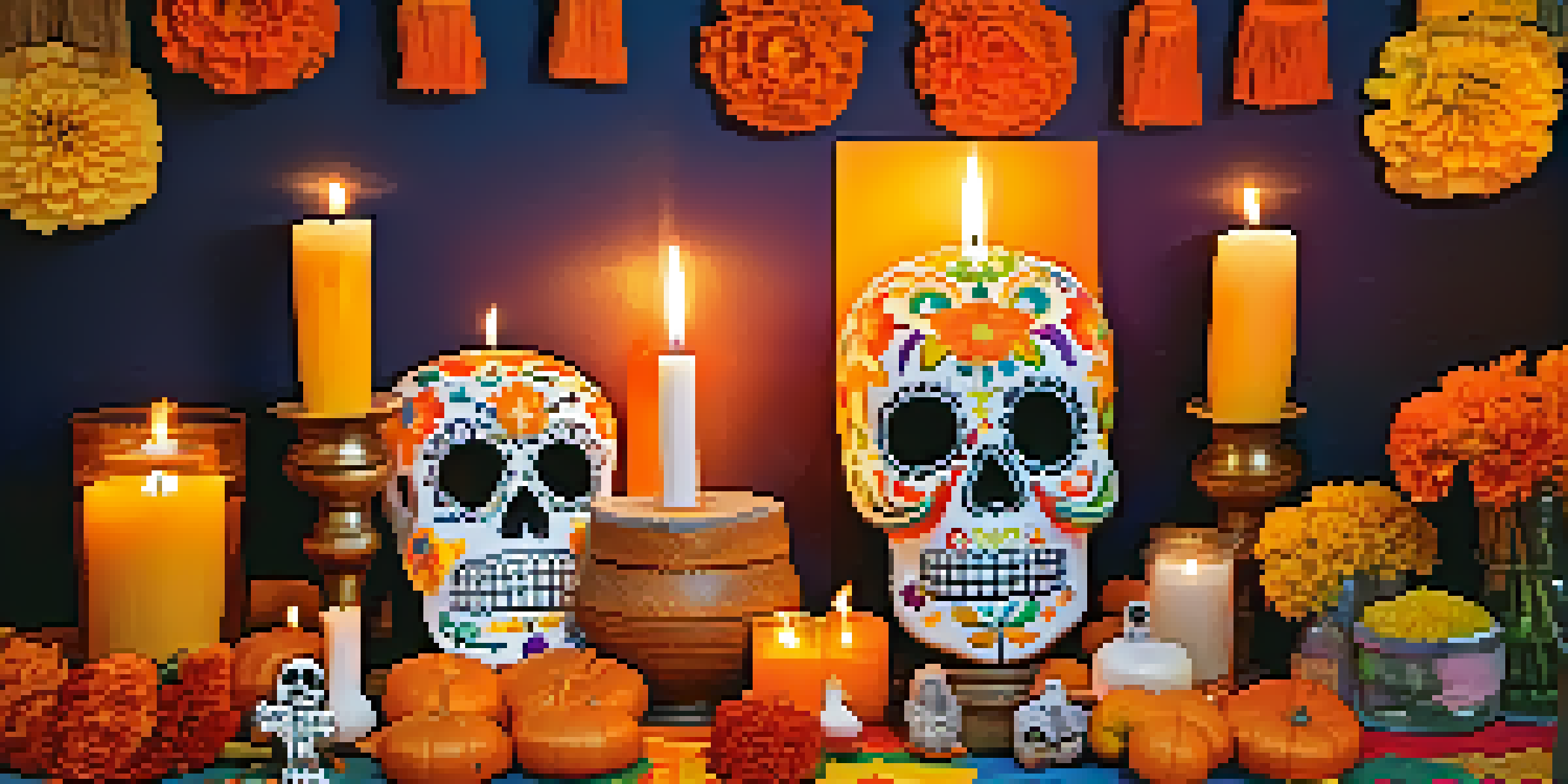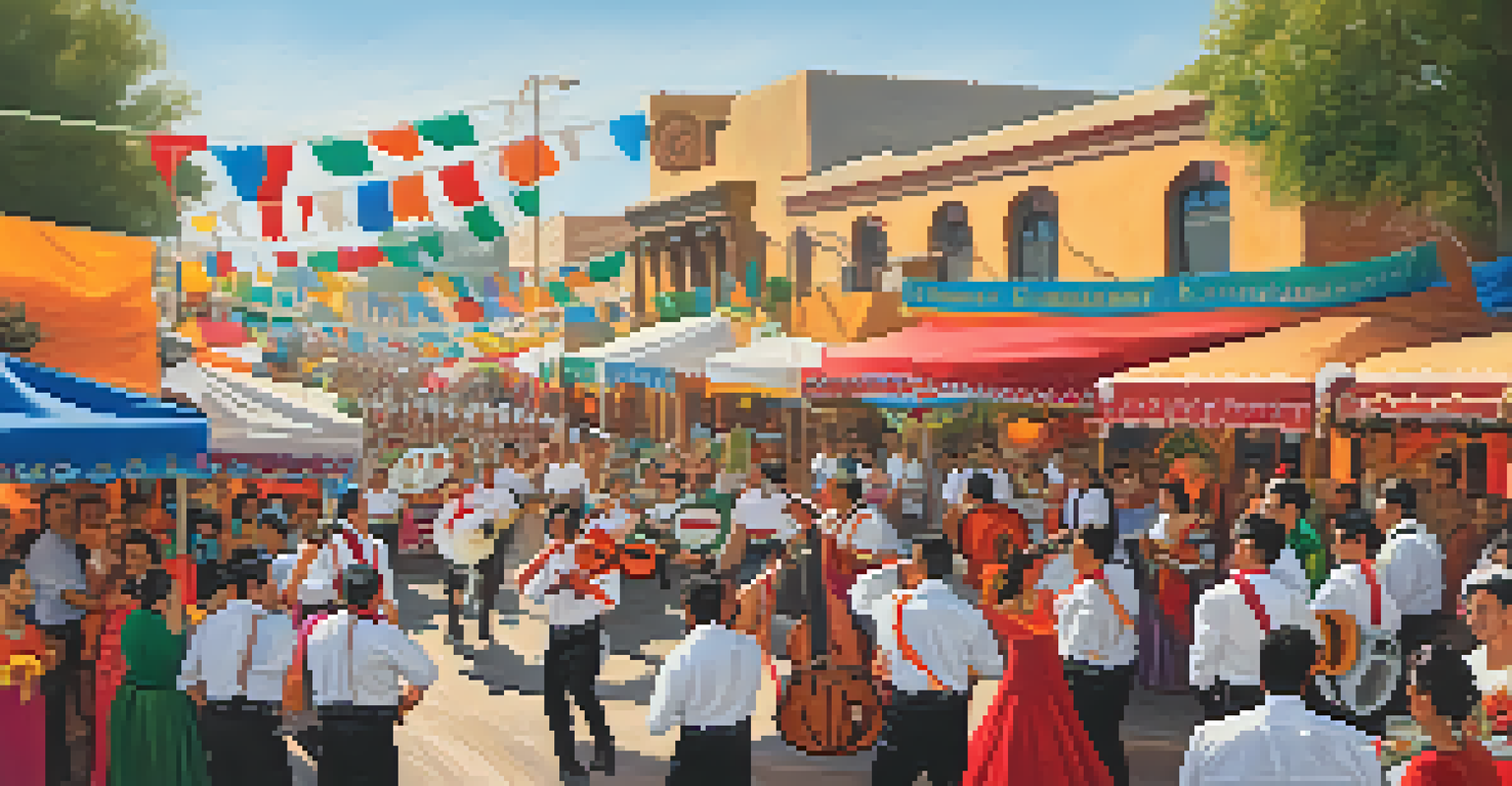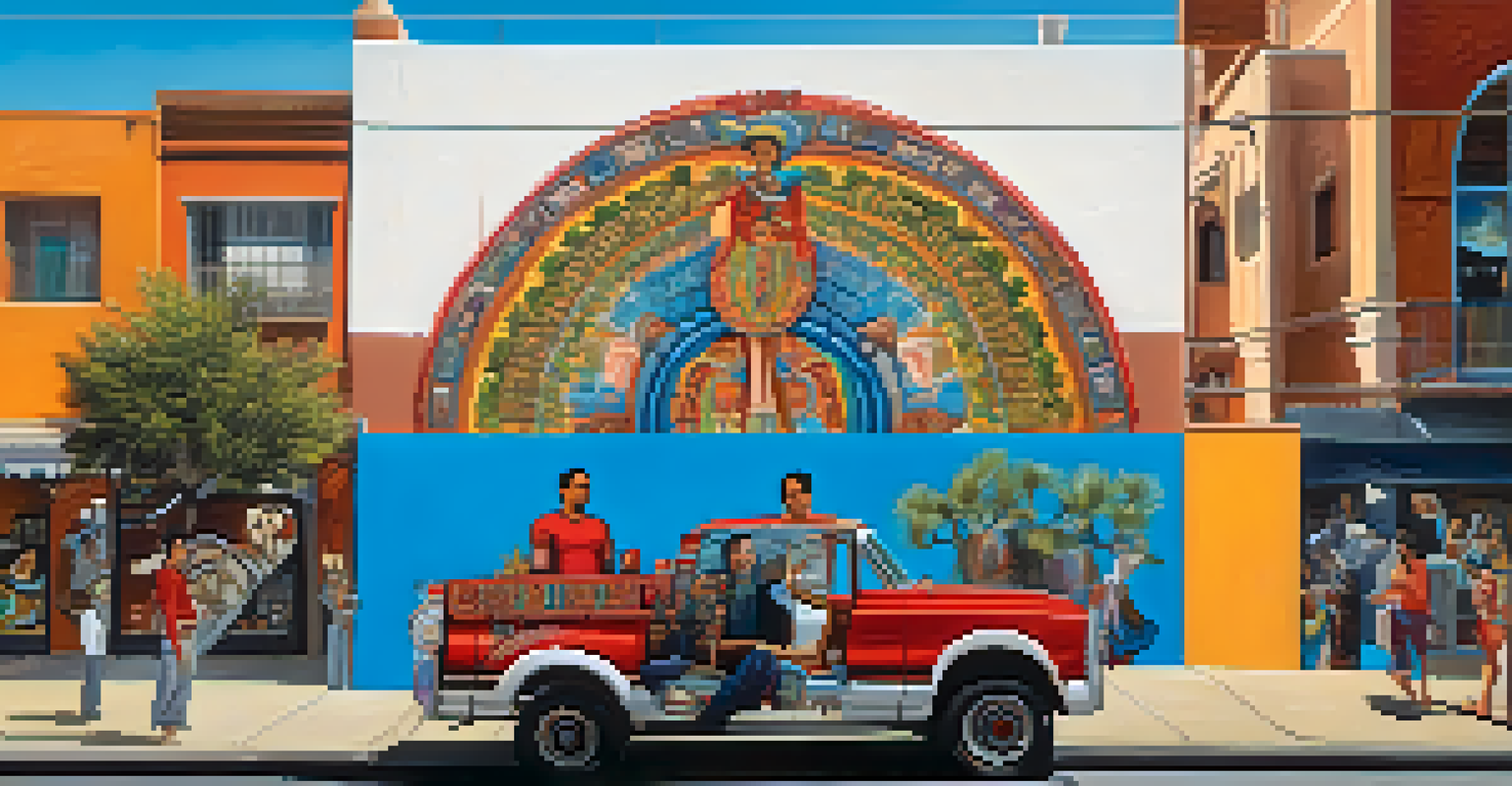Cultural Ties: California and Mexico Through Art and Festivals

The Historical Roots of California and Mexico's Connection
California and Mexico share a deep historical bond that dates back centuries. This connection was solidified by the Spanish colonization in the 18th century, which brought cultural and artistic influences that still resonate today. Landmarks, architecture, and even language reflect the intertwining histories of these two regions.
Culture is the widening of the mind and of the spirit.
The legacy of missions and presidios established by Spanish settlers laid the groundwork for cultural exchange. Cities like San Diego and Los Angeles showcase a blend of Mexican and Californian heritage, evident in their festivals, cuisine, and art. This rich history has fostered a vibrant community that celebrates its mixed roots.
Understanding this historical backdrop is essential to appreciate the artistic expressions that have emerged. From traditional crafts to modern installations, the cultural dialogue continues to thrive, creating a colorful tapestry that reflects both worlds.
Art as a Bridge: The Role of Artists in Cultural Exchange
Artists from California and Mexico have played a crucial role in bridging the cultural divide. Through their work, they often explore themes of identity, migration, and belonging, reflecting their shared experiences. This artistic dialogue fosters a sense of unity and understanding between the two cultures.

For example, muralists in Los Angeles have drawn inspiration from Mexican muralism, incorporating social messages that resonate with local communities. The vibrant murals found in places like Boyle Heights not only beautify neighborhoods but also tell stories of resilience and cultural pride.
Cultural Ties Between California and Mexico
California and Mexico share a rich historical connection that influences their cultural expressions, from art to cuisine.
Moreover, exhibitions featuring both Mexican and Californian artists challenge viewers to engage with diverse perspectives. This cross-pollination of ideas encourages collaboration and innovation, leading to a richer artistic landscape that celebrates their intertwined histories.
Celebrating Día de los Muertos: A Shared Tradition
Día de los Muertos, or Day of the Dead, is a powerful festival celebrated in both Mexico and California. This holiday honors deceased loved ones, blending indigenous traditions with Catholic influences. In California, communities come together to create vibrant altars, or ofrendas, adorned with flowers, photographs, and favorite foods of the departed.
Art is the most beautiful of all lies.
The festival's colorful parades and performances showcase traditional music and dance, drawing participants from diverse backgrounds. This celebration serves as a reminder of the importance of remembering and honoring those who have passed, fostering a sense of community and belonging.
In cities like San Francisco and Los Angeles, Día de los Muertos has evolved into a cultural spectacle, attracting thousands of visitors each year. These events not only pay homage to ancestors but also highlight the rich cultural ties that continue to thrive across borders.
The Influence of Mexican Cuisine on California's Food Scene
Mexican cuisine has had a profound influence on California's culinary landscape, transforming it into a vibrant fusion of flavors. From taco trucks to upscale restaurants, the availability of authentic Mexican food is a testament to this rich cultural exchange. Dishes like tamales, pozole, and mole have become staples in California kitchens.
Food festivals throughout California celebrate this delicious heritage, bringing together chefs and food enthusiasts to share their culinary creations. These events often feature cooking demonstrations, tastings, and live entertainment, showcasing the dynamic relationship between Mexican and Californian cuisine.
Art as a Unifying Force
Artists from both regions create impactful works that explore shared themes of identity and cultural belonging.
California's embrace of Mexican flavors reflects the state’s diverse population and its appreciation for multiculturalism. This blending of culinary traditions not only satisfies appetites but also fosters an appreciation for the shared history and cultural ties that bind these two regions.
Festivals as Cultural Celebrations: A Showcase of Traditions
Festivals in California often highlight the rich cultural tapestry woven from its connections to Mexico. Events like the Los Angeles Mexican Independence Day Festival and the San Diego Mariachi Festival draw large crowds, celebrating music, dance, and art from both cultures. These festivals create a festive atmosphere where people of all backgrounds come together to enjoy shared traditions.
Music plays a vital role in these celebrations, with mariachi bands and folkloric dancers captivating audiences. The performances not only entertain but also educate attendees about the importance of cultural heritage. This engagement fosters a sense of belonging and appreciation for the arts that transcend borders.
Through these vibrant festivals, California showcases the beauty of its Mexican heritage, allowing communities to celebrate their roots. They serve as platforms for cultural exchange, bringing people together in a joyous celebration of identity and history.
The Impact of Cross-Border Collaborations on Artistic Expression
Cross-border collaborations between California and Mexican artists have led to innovative and exciting artistic expressions. These partnerships often result in unique exhibitions, performances, and projects that blend diverse styles and mediums. By working together, artists create a dialogue that enriches both cultures and inspires new forms of creativity.
For instance, joint art projects and community initiatives have emerged in border cities like Tijuana and San Diego. These collaborations highlight shared experiences and social issues, fostering understanding and empathy through artistic expression. The outcomes often resonate with audiences on both sides of the border, emphasizing unity and collaboration.
Celebrating Shared Traditions
Festivals like Día de los Muertos highlight the vibrant cultural exchanges that honor both Mexican and Californian heritage.
Such partnerships not only amplify artistic voices but also promote cultural awareness. They encourage audiences to explore the complexities of identity and heritage, ultimately strengthening the cultural ties that connect California and Mexico.
Preserving Cultural Heritage Through Education and Outreach
Preserving cultural heritage is essential for future generations, and education plays a key role in this process. Schools and community organizations in California often incorporate Mexican art, music, and traditions into their curricula, fostering a sense of pride among students. This outreach helps to ensure that the rich cultural ties between California and Mexico are honored and maintained.
Workshops, classes, and cultural events provide opportunities for individuals to learn about Mexican traditions firsthand. From learning to make traditional crafts to participating in folkloric dance, these experiences deepen appreciation for cultural heritage. They also create a sense of community as people come together to celebrate their shared history.

By investing in educational initiatives, California nurtures a new generation that values and honors its diverse cultural landscape. This commitment to cultural preservation strengthens the bonds between California and Mexico, ensuring that these vibrant traditions continue to thrive.